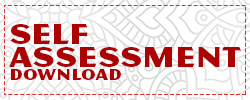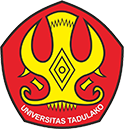ADAPTATION OF ONLINE MEDIA JOURNALISTS DURING COVID-19
DOI:
https://doi.org/10.22487/ejk.v11i1.1117Keywords:
Journalist, Online Media, Pandemic, COVID-19Abstract
The COVID-19 pandemic that occurred some time ago has become a disruption that has harmed journalists' work. It is equally known that journalism jobs require mobility and a high level of interaction. However, during the COVID-19 pandemic, journalists' movement became limited. In this research, the author focuses on how journalists adapted to carrying out their work during the Pandemic in 2020. This research uses a qualitative case study approach with in-depth interviews. More specifically, the research focuses on online mainstream journalistic media as the research subject. Online media were specifically chosen as the research subject, considering that in the digital era, online media have become one of society's main sources of information. During the COVID-19 pandemic, mainstream media became the front guard as a public information source. The sources for this research consisted of nine journalists from four national online media, namely Detik.com, Tribunnews.com, Suara.com, and VOI.id. This research found that journalists adapted to cover news during the Pandemic, including reducing offline coverage, increasing online coverage and adjusting the rhythm or routine of working hours
Downloads
References
Bajari, A. (2015). Communication research methods: procedures, trends, and ethics.
Dewitri, D., WIbawa, D., and Dulwahab, E. (2020). COVID-19 reporting at tribunjabar.id. Journal of Journalism Science, 3(1), 39–50. https://jurnal.fdk.uinsgd.ac.id/index.php/annaba/article/view/2693
Evandio, Akbar. (15 Mei, 2020). Dilema Industri Pers di Tengah Pandemi Covid-19. https://ekonomi.bisnis.com/read/20200515/12/1241046/dilema-industri-pers-di-tengah-pandemi-covid-19 Diakses pada 5 Juli 2020
Fisher, A. (2008). Critical Thinking: An Introduction (Berpikir Kritis: Sebuah Pengantar) Erlangga.
Fajar Junaedi, lecturer in Communication Sciences, Muhammadiyah University of Yogyakarta Regeneration of Reason amid the Pandemic held by the Muhammadiyah Student Association in Surakarta City, 11 May 2020 http://repository.umy.ac.id/bitstream/handle/123456789/33335/Jurnalis% 20in%20Time%20Pandemic%20Covid.pdf?sequence=1&isAllowed=y (20 August 2023)
Fuchs, C. (2020). Everyday life and everyday communication in coronavirus capitalism. TripleC: Communication, Capitalism dan Critique. Open Access Journal for a Global Sustainable Information Society, 18(1), 375–398. https://doi. org/10.31269/triplec.v18i1.1167
Handayani, P. (2021). An Overview of the Quality of Life for Journalists Covering the COVID-19 Pandemic. MINDSET Psychological Scientific Journal, 1(01), 11-24.
Harnita, P. C. (2015). Journalistic elements also for bloggers? Journal of Interaction, 4(1), 82–89. https://ejournal.undip.ac.id/ index.php/interaksi/article/view/9738
Indah, S. N. (2020). Examining the work and ethics of journalists during COVID-19. In D. H. Nurudin, Santoso, dan F. Junaedi (Eds.)
Kencana, W. H., Situmeang, I. V. O., Meisyanti, M., Rahmawati, K. J., & Nugroho, H. (2022). Use of Social Media in Online News Portals. IKRA-ITH HUMANIORA: Journal of Social and Humanities, 6(2), 136-145.
Kriyantono, R., & Sos, S. (2014). Practical techniques for communication research. Prenada Media.
Masduki, M., & Prastya, N. M. (2022). Changes in journalistic work patterns after COVID-19 and declining news quality in Indonesia. Jurnal Ilmu Komunikasi, 19(3), 266-280.
Mulyana, Deddy dan Solatun. (2013). Communication Research Methods: Examples of Qualitative Research with a Practical Approach. Bandung: Remaja Rosdakarya
Omar, B. (2017). Online news production, consumption and immediacy: The remediation perspective. Jurnal Komunikasi: Malaysian Journal of Communication, 33(3).
Perdana, R. C., Agustino, M. R., Hartawan, D., Suyoso, Y. A., & Sari, R. (2020). Adaptation and New Habits of the Human Resource Department during the COVID-19 Pandemic. Business Innovation and Entrepreneurship Journal, 2(3), 201-204.
Priyambodo, R. H. (2012). Journalist competency test guidelines: Application of journalist competency standards. In the Press Institute, Dr. Soetomo.
Romli, A. S. M. (2018). Jurnalistik online: Panduan mengelola media online. Nuansa Cendekia.
Russell, C. (2020). Key quotes: Newsroom management during a pandemic. International Center for Journalists. https://www.icfj.org/news/key-quotesnewsroom-management-during-pandemic
Santoso, A. D. R., Lorraine, V., & Ramadhani, P. F. (2021). Management of News Coverage by MNC Media Reporters in Yogyakarta in the COVID-19 Pandemic. Audience Journal, 3(1), 125–140. https://doi.org/10.18196/jas.v3i1.11888
Siapera, E., & Veglis, A. (Eds.). (2012). The handbook of global online journalism. John Wiley & Sons.
Smith R, Newman E and Drevo S. (2015). Covering trauma: Impact on journalists. Dart Center For Journalism and Trauma. Available at: http://dartcenter.org/content/covering-trauma-impacton-journalists
Syuhada, I. B. (2017). Online Media Communication Marketing Strategy Detik.com. WACANA: Scientific Journal of Communication Sciences,169–187. Retrieved from http://journal.moestopo. Ac.id/index.php/wacana/article/ view/183
Tandoc Jr, E. C., & Takahashi, B. (2018). Journalists are humans, too: A phenomenology of covering the strongest storm on earth. Journalism, 19(7), 917-933.
Wardhani, D., & Putra, A. M. (2012). The Repotition of Communication in the Dynamic of Convergence: Reposisi Komunikasi dalam Dinamika Konvergensi. Jakarta: Kencana Prenada Media Group.
Waluyo, D. (2018). The meaning of journalism in the digital era: An opportunity and transformation. Diakom: Journal of Media and Communication, 1(1), 33-42.







